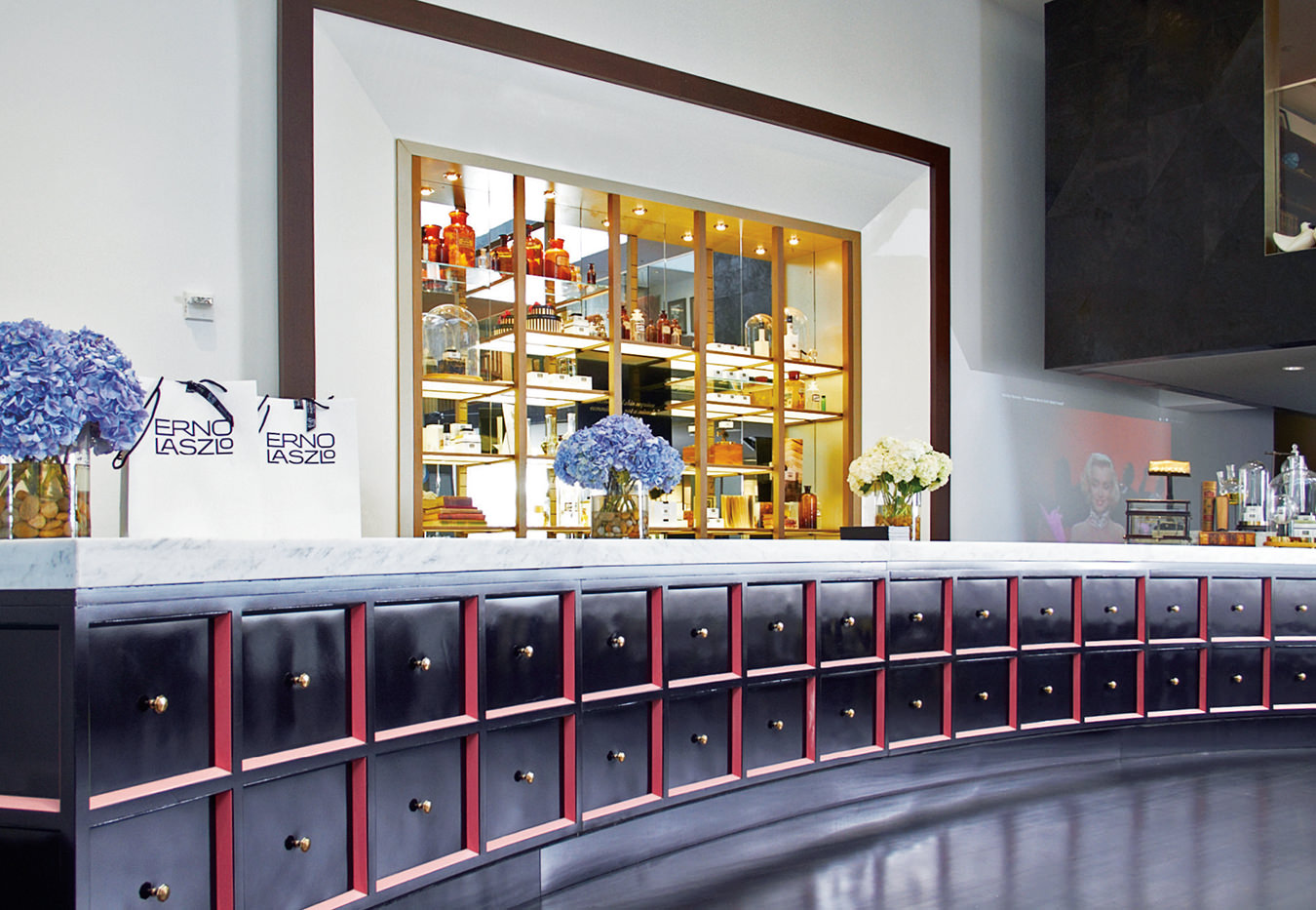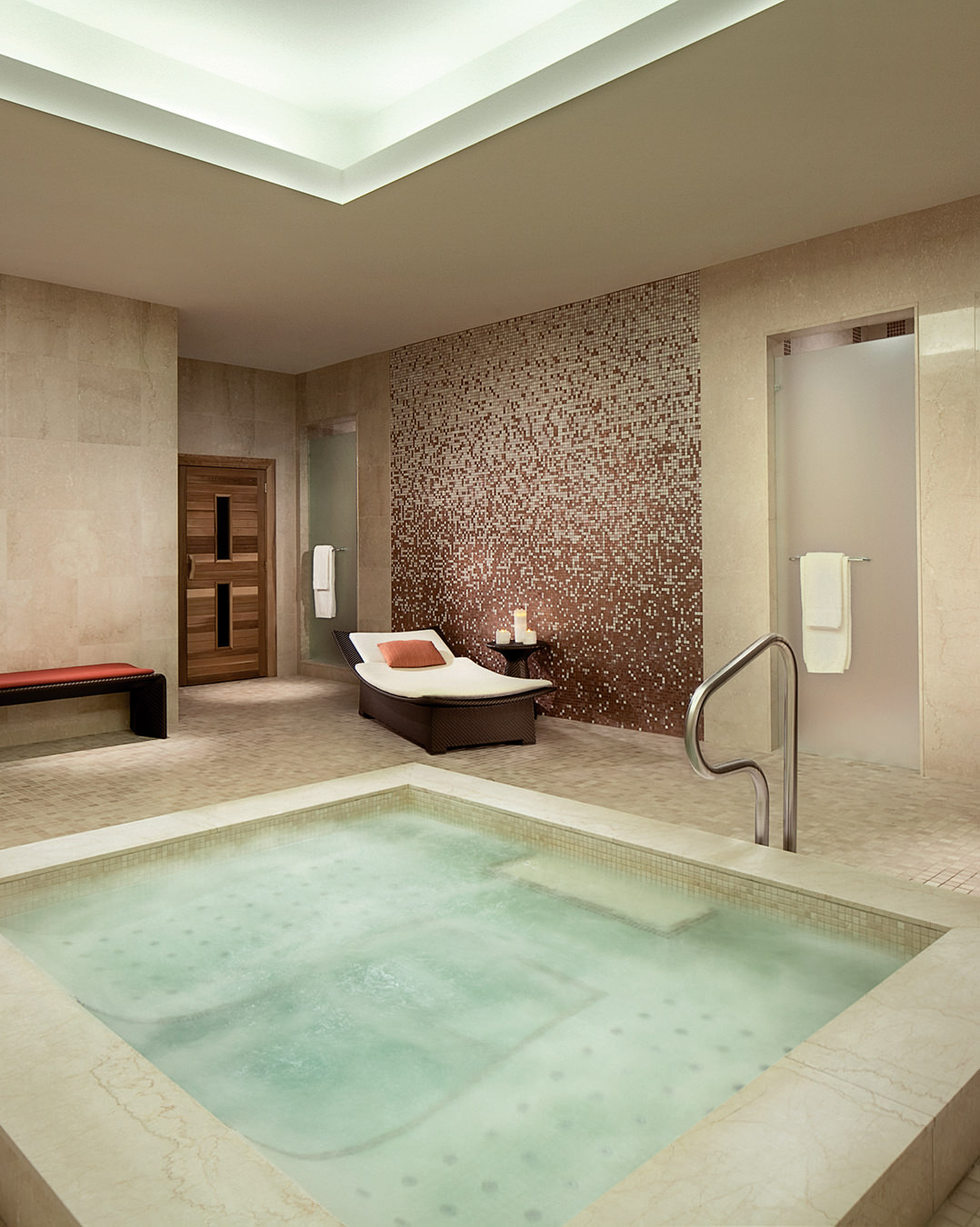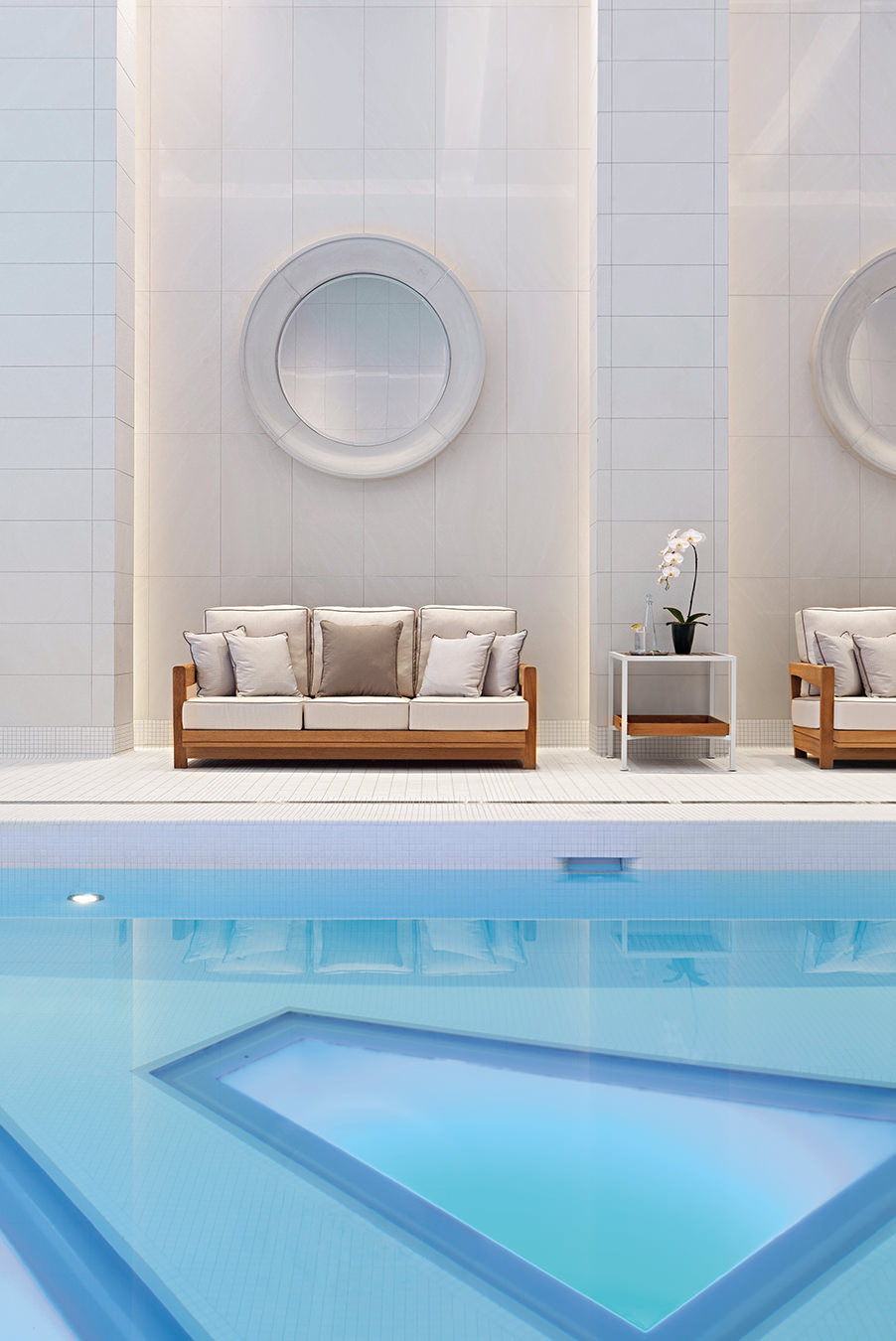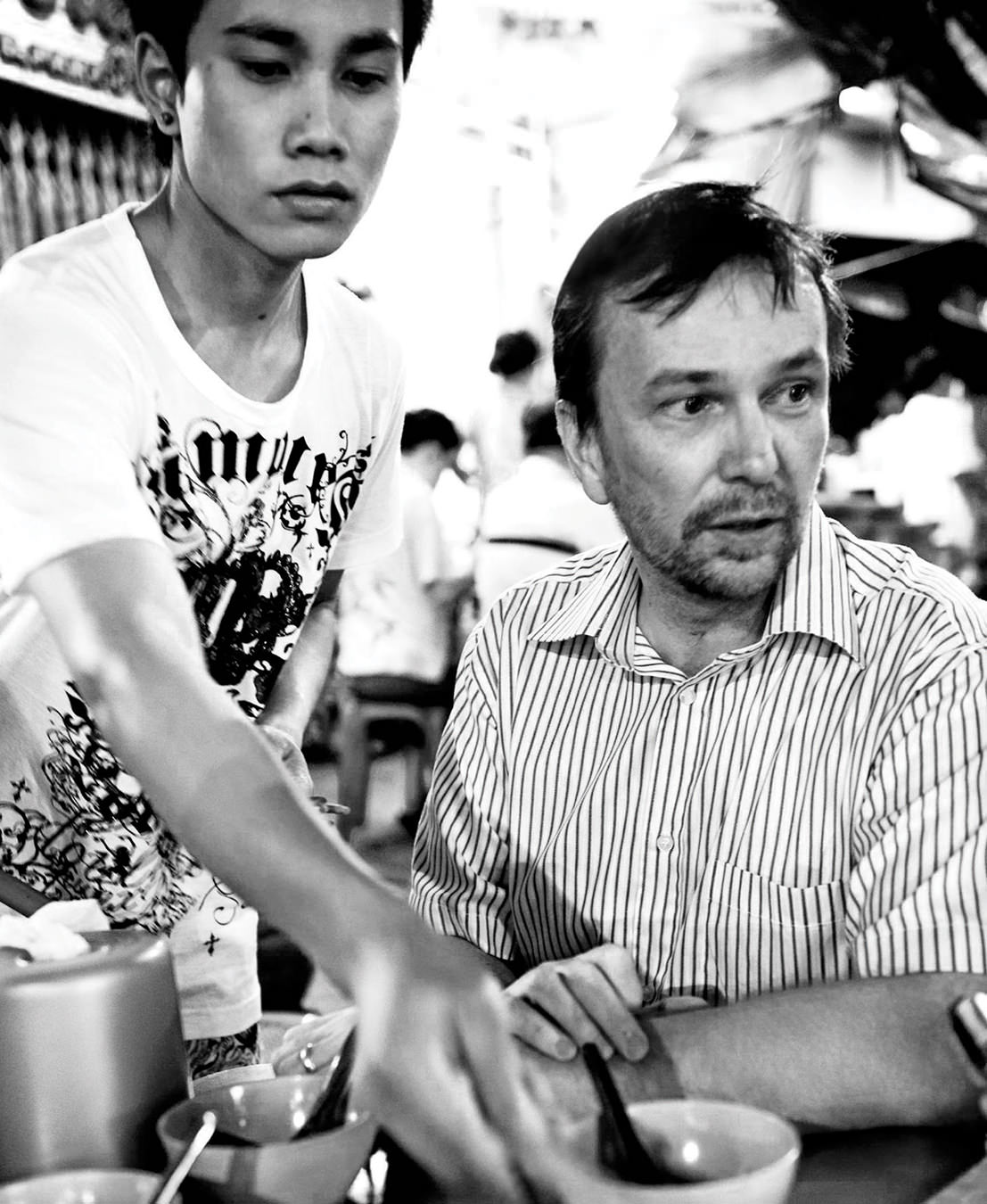Wat Pho
Traditional Thai massage.
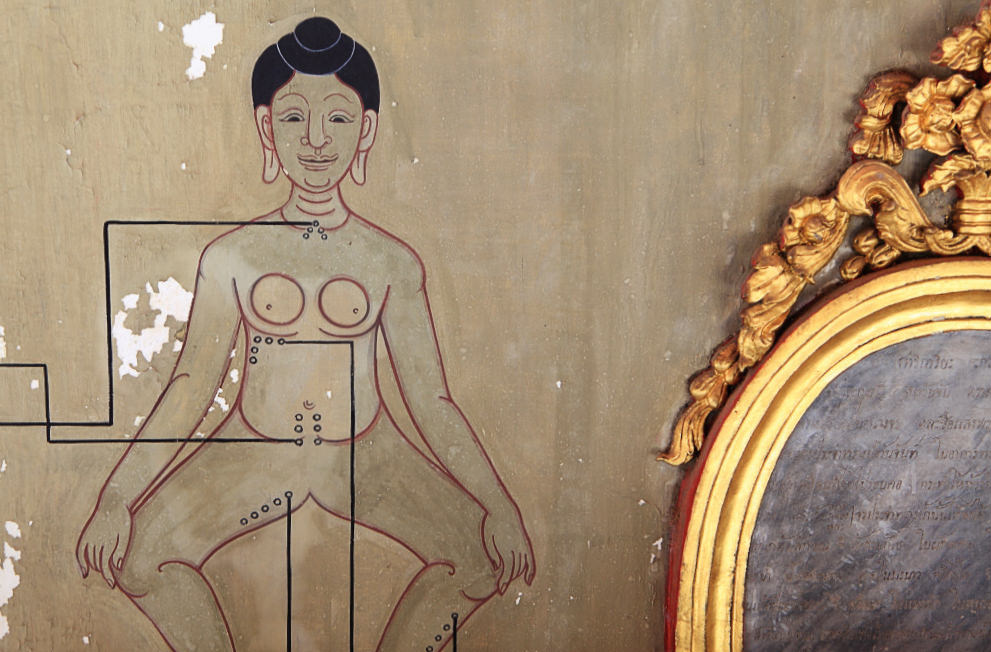
A decorative wall detail at Wat Pho Thai Traditional Medical and Massage School in Bangkok.
Most visitors to Wat Pho, Bangkok’s largest and oldest temple (built in 1688), come to see the enormous reclining Buddha. Crafted in the 1830s during the ancient temple’s first great restoration under the reign of King Rama III, the dazzling Buddha is 15 metres high and extends 46 metres from his head to the inlaid mother-of-pearl soles of his feet. Those in the know then make their way to the back of the vast 20-acre temple grounds to get a true traditional Thai massage, for which Wat Pho is also famous.
Thai massage has been practised for over 2,500 years, but the earliest surviving records of the ancient body treatment are the stone yogi statues in twisted massage positions and the marble inscriptions on the walls of Wat Pho, commissioned by King Rama III around the time the Buddha was built. More than a century later, the temple opened the first traditional Thai medical school, which had an emphasis on herbal medicine. In 1955, Thailand’s beloved King Bhumibol Adulyadej (King Rama IX) asked the school to teach Thai massage as part of the curriculum. And so, with a royal blessing, the Wat Pho Thai Traditional Medical and Massage School was born.
Thai massage isn’t focused on relaxation. In fact, it’s very intense. It involves a combination of a number of techniques, incorporating active stretching, deep compressions, and acupressure, all of which are based on Buddhist philosophies and traditional Thai medicine. The therapists use their hands, arms, knees, legs, and feet to push, pummel, and pull your limbs into myriad pretzel shapes. A traditional massage, practised on a mat or massage bed, is typically a two-hour workout—and in the hands of a good massage therapist, you’ll come out feeling as chipper and lithe as Gumby.
Originally, the Wat Pho school operated out of humble open-air premises within the temple grounds. Adventurous tourists willing to be practice subjects for eager massage students could try a Thai massage for less than the price of a Singha beer. But the school became so popular, with students jetting in from around the globe to learn the traditional massage methods, that the teaching facility eventually moved into a building near the temple grounds.
The massage centre has remained at Wat Pho, although today it consists of two air-conditioned marble-floor pavilions with nearly 40 beds each. Therapists are now fully trained, and a one-hour massage costs the equivalent of about three Singha beers (around $13 Canadian). The massage is a signature way to cool off and recharge after hours of temple sightseeing in the sultry Thai heat.
You don’t have to travel to Thailand to experience a traditional Thai massage, as several spas across Canada offer the treatment, too. At Vancouver’s new Smile Thai Wellness, founder and former Buddhist monk Austin Sakchai is so adept at gently limbering up clients (he incorporates hot lemongrass-scented towels to massage the shoulders) that the studio was rated as one of the city’s most popular tourist attraction within months after its 2010 opening. The ancient art is gaining a modern following.
Photo provided by the Tourism Authority of Thailand.

